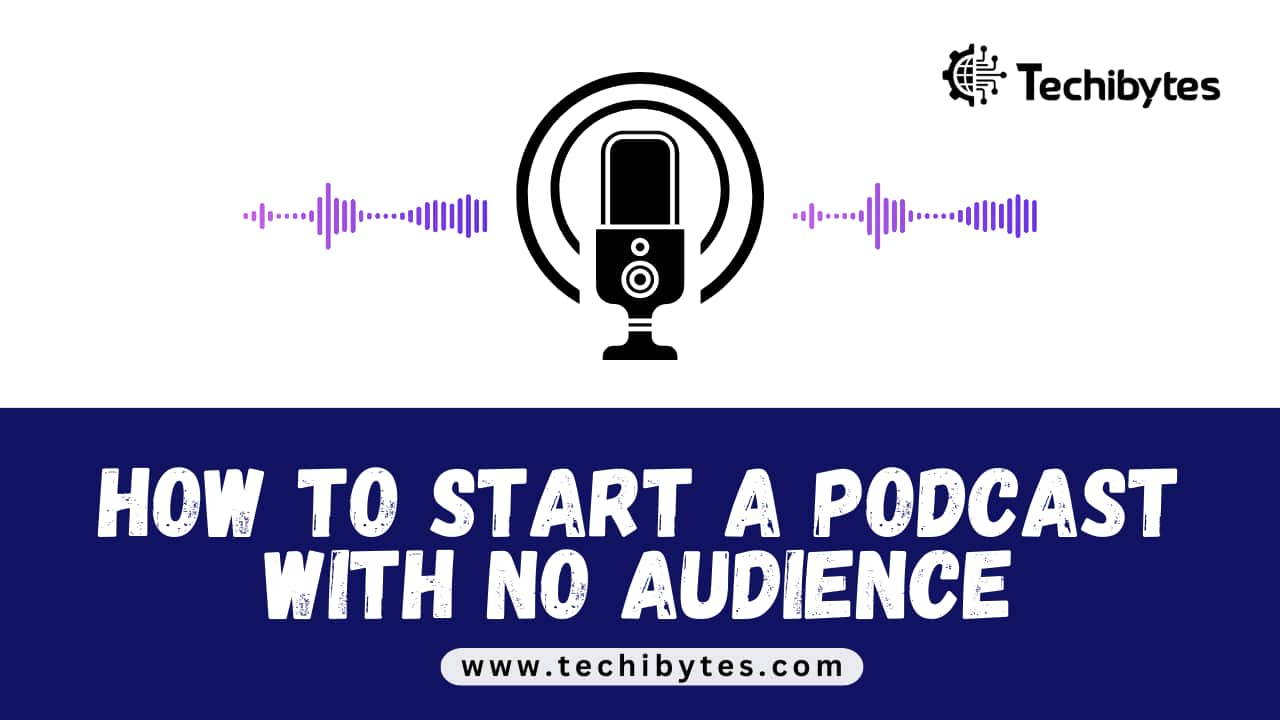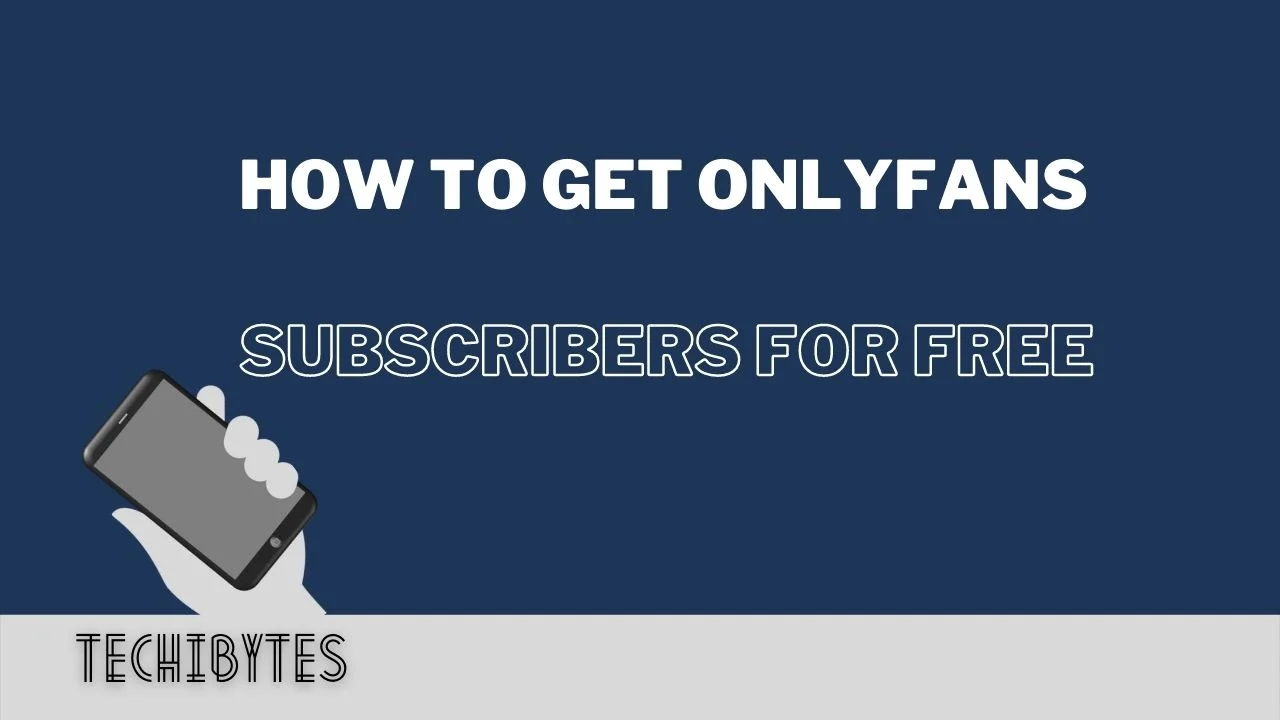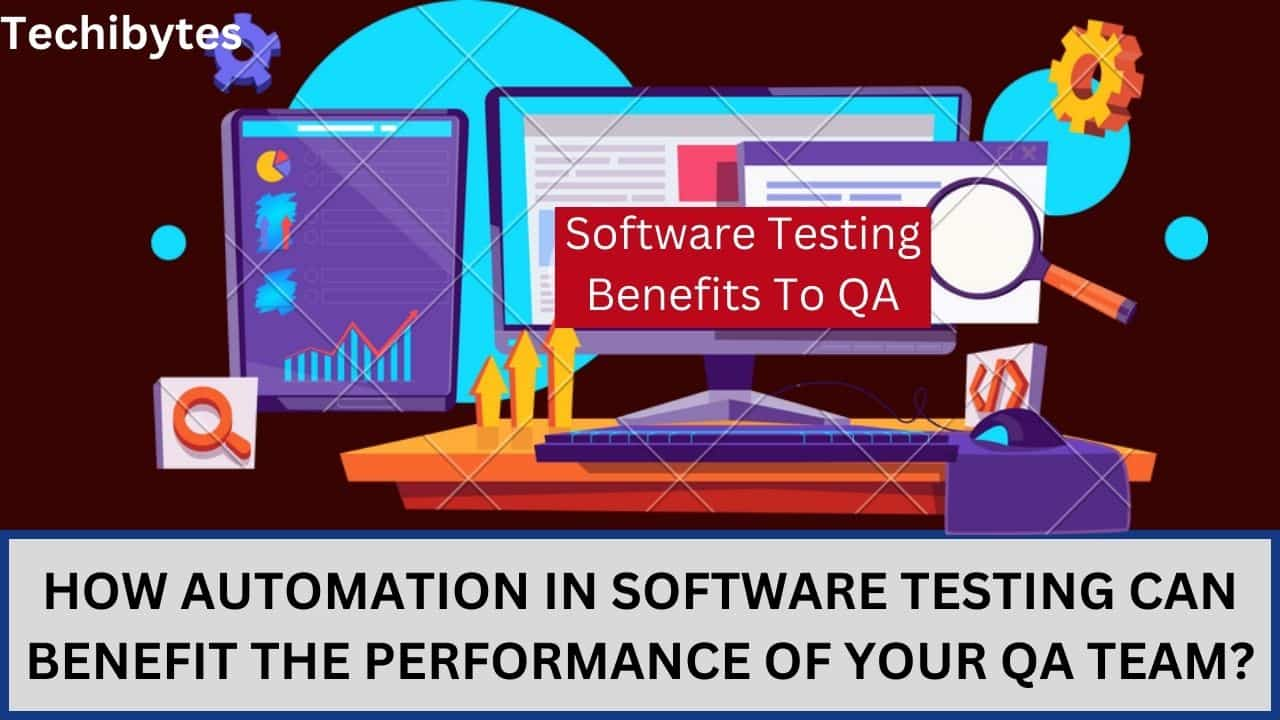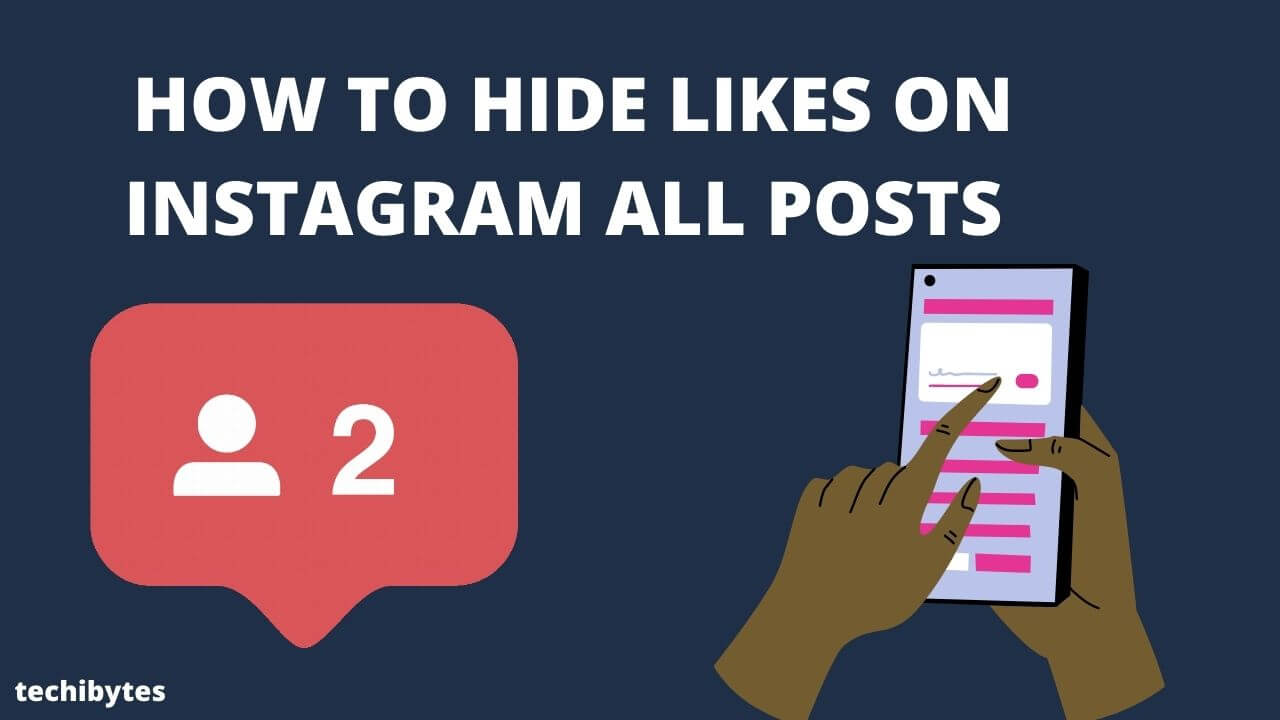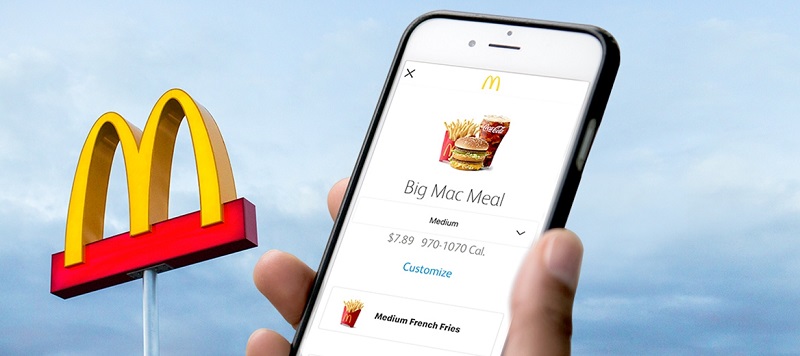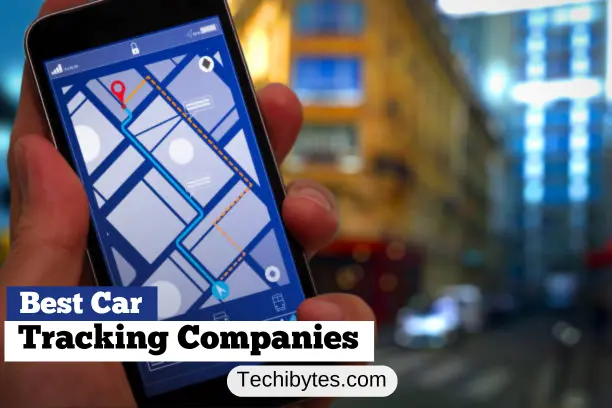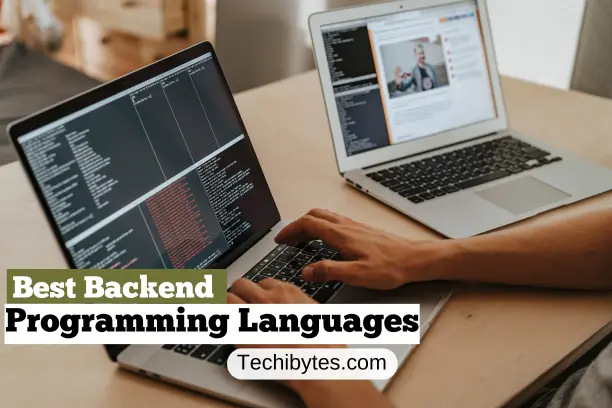Have you been considering starting your podcast? Have your major worries been getting an audience? Has that prevented you from going on with starting your podcast? You are definitely at the right place if you’re looking for a step-by-step guide on how to start a podcast with no audience.
Although it’s simple to start a podcast, there are a few steps you’ll need to take to get it off the ground. In this post, we’ll be taking a look at how to start a podcast with no audience and how to start a podcast on Spotify
Do well to read this post to the end. It promises to be very helpful.
Table of Contents
What Is A Podcast?
A podcast is a listenable audio recording of a conversation about a particular subject, like business or tourism. Though sometimes maintained on websites, they are frequently found on iTunes and Spotify. Wherever your audience may be, this dynamic medium can be the ideal way to provide your daily dose of inspiration.
It’s a massive collection of audio files that you can browse, download, and listen to whenever and wherever you want; in the vehicle, at work, at home, or while exercising. It contains all of your favorite blogs, shows, and topics. There’s a Podcast about anything if you can Google it!
A podcast is a digital audio file that can be downloaded to a computer or mobile device from the Internet. Usually offered as a series, new episodes of a podcast can be automatically received by subscribers.
The word Podcast is a mash-up of iPod and Broadcast. Podcasting began as a largely independent means for individuals to spread their message and create a network of people who share their interests but it has grown tremendously over the years.
Types of Podcasts
1. The Interview Podcast
Each episode of this podcast features interviews with a different guest conducted by one or two hosts. This structure is well-liked because it doesn’t usually call for extensive pre-work.
Researching your interviewee and developing a list of questions to ask are typically part of preparation. Naturally, you’ll need certain soft skills to launch this type of podcast, such as the ability to persuade guests to participate, interviewing abilities, and the capacity to routinely generate podcast episodes.
2. The Solo Podcast
This can be one of the greatest podcast formats for you if you’ve been wondering how to start a podcast. These podcasts are frequently delivered as monologues, with just one host (you) in charge.
Solo podcasts’ material can be of any kind that can be presented by a single person, including opinion-based, news-related, Q&A, and other formats. This podcast is simple to create technically because all you need is your voice, some knowledge of how to record a podcast, and a topic to discuss.
3. Multi-Host Podcast
With two or more hosts, this type of podcasting can be more engaging than a show with only one host. This can be a great choice for you if you’ve been looking at how to launch a podcast and have a business partner.
For listeners who prefer to hear conversations and arguments rather than just one person talking, multi-host podcasts offer discussions with a variety of viewpoints and beliefs.
As there are more people and more ideas, the creators are also under less pressure to maintain the audience’s interest.
Can I Start A Podcast With No Audience?
Without an audience already in place, you can launch a podcast, but you’ll need to create a marketing strategy to grow it. SEO optimization, podcasting websites, transcripts, and directory presence are examples of tried-and-true methods. Think about becoming a guest on programs in your niche as well.
Starting a podcast without listeners will be hard without a marketing strategy because podcasting still has issues with the natural discoverability of broadcasts. Hence, you must make an effort to make yourself accessible to your listeners.
Some questions you need to answer include: How much money are you willing to put into starting a new podcast? or What percentage of your leisure time are you prepared to devote to advertising your podcast?
An initial marketing plan need not be difficult. A website and a brand identity are two crucial things you must set up. You can add more components now that your show is broadcasting live.
Requirement On How To Start A Podcast With No Audience
Below are the requirement on how to start a podcast with no audience:
1. Find Your Niche

Choosing an idea is the first step in how to start a podcast with no audience. A key factor in acquiring the proper listeners and maintaining your program’s commitment is picking the ideal podcast theme for your new show.
You need to know how to find your specialty if you want to grow an audience and produce a podcast that appeals to them. You can draw in a more focused and active audience when you specialize. Broadly appealing podcasts may wind up attracting fewer listeners.
A specialty podcast is also more likely to be suggested to a friend than a general one. Concentrate on a subcategory or sub-demographic to create your podcast’s niche.
Focus on the unique aspects of your podcast. What special angle can you offer the subject of your podcast? You can stand out from the crowd and establish a devoted following for your podcast more easily if you have a specialty.
You may sell your podcast to a certain audience and expand it more quickly if you have a defined specialization.
Knowing your why is crucial, even if it’s only to have fun with friends, generate leads for a business, establish oneself as an industry authority, or disseminate a crucial message are some excellent reasons to start a podcast.
2. Name Your Podcast
The next step on how to start a podcast with no audience is to name your podcast. A key component of your brand is the name of your podcast. It establishes the tone for your podcast and leaves a lasting impact on listeners.
Your podcast should have a distinct name that is easy to understand. Your title should be precise. No matter how interesting the topic, a podcast called Our Community Bulletin, for example, won’t draw in many viewers.
Podcast titles should be clear and concise, readily available, memorable, and related to your company name or brand.
After you have a title in mind, use a podcast name checker to see whether the domains and social media accounts are still available. Moreover, you shouldn’t utilize the name of another podcast.
3. Choose Your Podcast Format
This is the next step on how to start a podcast with no audience. Your format ought to feel sustainable and work with your podcast.
If you decide to have co-hosts, make an effort to create a small gathering. Scheduling becomes difficult when there are more than two or three hosts for a podcast.
Remember that certain shows demand a higher level of production than others. For example, fiction podcasts typically require more editing than podcasts with interviews.
Interview podcasts, co-hosted podcasts, written non-fiction, news recaps, educational podcasts, scripted fiction, etc. are some examples of popular podcast formats.
Make sure that your episodes are only as long as necessary. Some podcasts feature episodes that are under five minutes long, while others have ones that are longer than a brief audiobook. The typical podcast runs 20–40 minutes.
4. Setup Podcast Recording Equipment
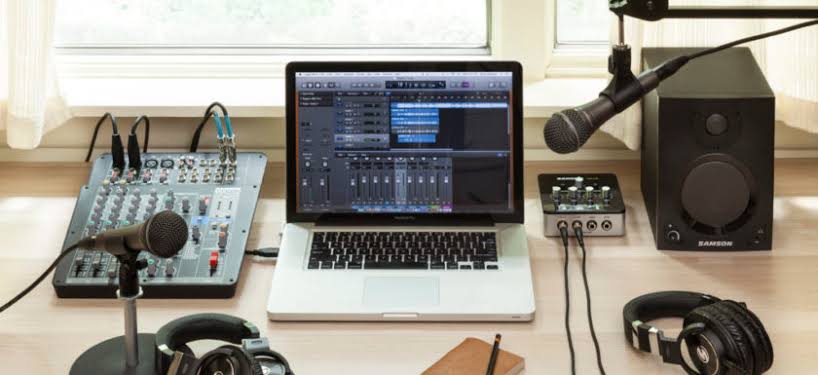
The next step on how to start a podcast with no audience is to set up your podcast recording equipment. Good audio can be had without spending a lot of money on equipment. Several well-known podcasts have a straightforward setup.
A good podcast mic improves audio quality and streamlines editing. A recording with less background noise will require less post-production editing.
The best mics for podcasting are dynamic ones. They are less sensitive and pick up lower frequencies. There will be less background noise to cut out as a result.
More sensitive and capable of picking up a wider spectrum of frequencies are condenser microphones. Sensitivity is perfect for music recording but not for spoken word.
You’ll need an open audio recording program, such as Audacity, and a microphone connected to your computer. Furthermore, make sure your recording program is using your microphone as the input device. Once that is finished, start chatting by pressing the record button on your audio program.
5. Record Your First Episode
This is the main deal and is the core aspect of how to start a podcast with no audience. Writing a podcast script or blueprint is the greatest approach to combat the inclination to ramble, which is one of the most common mistakes novice podcasters make.
The flow of your episode will be improved even if you just take a few moments to write down a list of bullet points. Share the outline with your cohost(s) if you’re working with them so you can finish it together.
Record in a quiet space with lots of furniture, if at all possible. Foam panels on the walls are another way to soundproof your home.
For the purest sound, place your mouth 2 to 4 inches away from the microphone, though the ideal distance may vary depending on the microphone.
6. Edit Your Audio
The main purposes of podcast editing are to improve the audio quality and make straightforward structural adjustments. Make an effort to keep things simple as it is a vital step on how to start a podcast with no audience. You’ll become overburdened if you concentrate too much on productivity.
Make an interesting opening and closing. Your podcast’s introduction explains who you are and the benefits you hope to provide to your listeners. When done correctly, your opener captures listeners’ attention and persuades them to stay for the entire episode.
On your first pass, edit for content; on your second, focus on addressing any noise or other distractions.
7. Create Podcast Artwork

This is another important step on how to start a podcast with no audience. Potential listeners notice your podcast cover image first on Apple Podcasts or social media.
62% of new listeners are more likely to listen to a podcast if they enjoy the cover art because good artwork suggests strong content. A Square image of 3000 × 3000 pixels, 72 dpi resolution, PNG or JPEG file formats, and RGB colorspace are required by Apple for the podcast artwork.
The artwork for your podcast should convey its theme to potential listeners. In your cover picture, limit the number of words to four and make sure they can be read in small print. Also, you should stick to using just two complementary fonts.
Your podcast’s cover art shouldn’t depict podcasting equipment, just like movie covers don’t feature images of DVD players and TV sets. Your overall branding includes the artwork for your podcasts.
Although the images should remain constant, you are welcome to make small adjustments to the artwork to accommodate different layouts and pages.
8. Choose Your Host
You must use a third-party provider to host your podcast; you must pay for hosting and storage. This is an important step on how to start a podcast with no audience because you’ll need a podcast hosting account, also known as a media host, to make your podcast available to the public.
The companies that host media files or podcasts make it possible for users to listen to, download and subscribe to audio files.
While learning how to create a podcast, it’s a frequent assumption that you should upload your show to services like iTunes or Apple Podcasts.
9. Market Your Content
You need to market your podcast in addition to producing it if you want to attract listeners and grow your audience.
This is important because when you’re considering how to start a podcast with no audience, there are various ways to market it. Sharing your episodes on social media is a quick and easy way to start marketing your podcast.
To obtain your initial listeners, share your podcasts, and urge your network to share them with their friends and followers as well.
Social media is a terrific method to get the word out and pique interest in your podcast, even though your listener base will likely start small.
You may promote your podcast using an email list you already have. Build an email marketing campaign with your current mailing list in mind to promote your podcast.
Make sure to add a Call-To-Action in each podcast episode you create. Urge your listeners to subscribe to your mailing list, rate and review your podcast on your podcast-hosting website, and follow you on social media.
10. Get Listed On Apple Podcasts, Google Podcasts, and Spotify
Podcast listeners can locate new programs in one location by visiting directories like Apple Podcasts. This is the last step on how to start a podcast with no audience.
Your podcast marketing approach must include becoming listed in the big podcast directories. These directories will be where the majority of your new listeners discover your podcast.
Any good host will have a respectable selection of tools for guided or automatic submission. As a result, they make it simple to upload your program to prominent platforms like Apple Podcasts, Spotify, Google Podcasts, Amazon Music, and others.
How To Start A Podcast On Spotify (A Quick Guide)
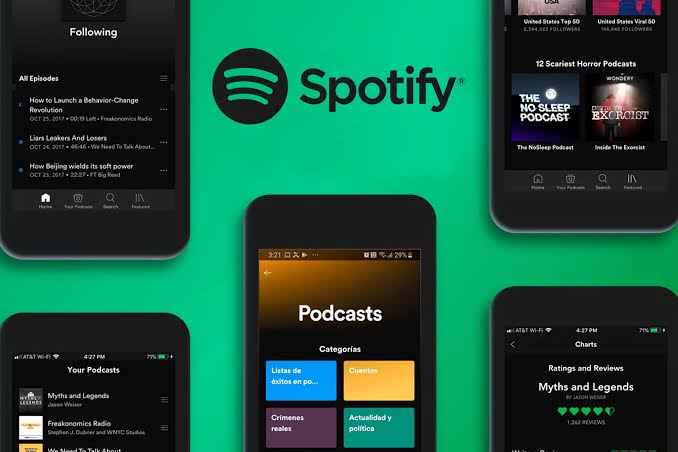
1. Prepare Your Podcast For Upload
When you’re considering how to start a podcast on Spotify, creating your podcast premise and selecting the appropriate podcast format are the first steps you must take.
Then you’ll have to finish setting up your podcasting equipment, record and edit your podcast using a program you are familiar with, finish the file details including the metadata and cover photo and verify your podcast meets Spotify’s requirements so that all that is left to do is upload it to a podcast hosting website.
You should generally prepare at least three podcast audio files that you may broadcast all at once if you want to advertise your podcast and possibly earn money from it.
These will provide more opportunities for your new listeners to get to know you and your program, which will promote podcast downloads and show subscriptions.
2. Choose A Podcast Hosting Service
Once all of your podcasts are prepared for upload, choosing a host is the next step on how to start a podcast on Spotify. Numerous popular podcast hosting services, including Libsyn, Buzzsprout, Blubrry, and PodBean, are available.
Although not all of them are free, the best approach to choose which one is for you is to learn more about them and what they have to offer. Before selecting the least expensive choice, you might want to consider your long-term requirements such as storage capacity and usability.
Most apps and websites, including Spotify, don’t keep podcast files. Hosts allow you to alert multiple podcast players with only a few clicks, and they do so.
3. Create A Spotify Account
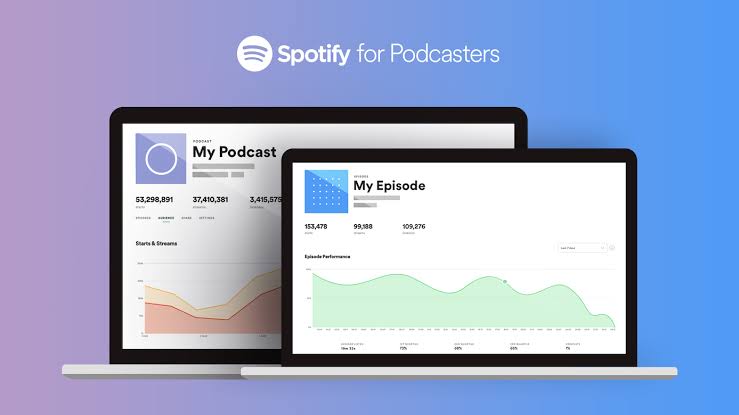
You’ll need a Spotify account to upload your podcast to the platform. Visit Spotify For Podcasters and sign in to complete this step if you already have one or create an account if you don’t have one. This is a step you can’t skip on how to start a podcast on Spotify.
4. Submit Your Podcast Via Your Host
They now permit you to add podcasts to Spotify through your preferred host rather than sending your RSS feed to Spotify as you would traditionally be instructed to do with other directories. This is an important step on how to start a podcast on Spotify
5. Wait For Approval
Your host may get in touch with you about the progress of your podcast submission; Spotify won’t. In the unlikely event that they don’t, you may either wait the 2–5 days for your program to be approved or look for your podcast on Spotify until it appears.
To ensure that the information is exactly as you want it to appear on the app, you’ll want to act before your listeners do.
6. Share Your Spotify Link
Sharing your Spotify link is the last step on how to start a podcast on Spotify. Increasing the number of listeners for your program is one method to make the most of its Spotify presence.
Get the direct link to your podcast from the Spotify desktop or mobile app and post it to your social media pages to share with your friends, family, and followers. For every show you release, make this a regular practice to gain the advantages of a larger audience.
Conclusion
After taking a look at the requirements on how to start a podcast with no audience and a quick guide on how to start a podcast on Spotify we hope this post helps clarify every misconception and fear you’ve had. Kindly let us know what you think.
If you liked this article, then please subscribe to our YouTube Channel for videos. You can also find us on Twitter and Facebook
Reference
- https://ng.oberlo.com
- https://www.thinkific.com
- https://www.thepodcasthost.com
- https://www.buzzsprout.com
- https://www.adorama.com
